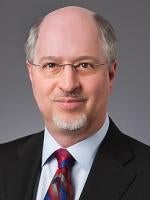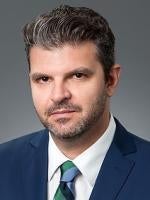It’s Day 2 of the J.P. Morgan Annual Healthcare Conference at its finest – looking closely at healthcare inequities, strategic business shifts and killer robots, all in the same day! (Yes, we did say killer robots and it’s your reward for reading all the way to the end of this article).
Healthcare Equity:
We have moved from last year’s significant emphasis at the JPM Conference on social determinants of health (SDOH) initiatives to a broader discussion of healthcare equity, social justice, diversity and anti-racism, as voiced by many health plans and health systems. Stephen Klasko, Chief Executive Officer of Jefferson Health, said that, “Health disparities are the #1 public health crisis in our nation.” As many noted at the Conference, the COVID-19 crisis is clear evidence that minority and economically disadvantaged communities are medically underserved and bear a higher burden of illness than their more affluent neighbors. Many of the healthcare companies presenting at the Conference expressed their commitment to work to improve those inequities. We look forward to what we will see at next year’s JPM Conference. It also was refreshing to see women Chief Executive Officers presenting at the Conference for leading healthcare companies, like Karen Lynch, the incoming Chief Executive Officer of CVS Health. Kudos for this year’s markedly increased presence on the podium of women in leadership – CEO’s, CFO’s and CSO’s, among others.
Stimulus Dollars Save the Day:
Looking at days’ cash-on-hand for many hospital systems, we see an interesting trend. A number of systems in heavily COVID-19 affected geographies were reporting days’ cash-on-hand with a break-out to illustrate the effect of the stimulus dollars. Without those stimulus dollars, a good number of systems were well below 200 days cash-on-hand (i.e, only 5-6 months of cash). Larger health systems that were more geographically diverse were reporting higher – and more customary for them – levels of days cash-on-hand. What’s the story here? If elective surgeries continue to be suspended during COVID-19 surges and we don’t see another significant stimulus package, 2021 could see a number of health systems falling to 3 months of cash-on-hand or less. Will that create bond or credit facility defaults, delay the launch of new initiatives or construction, or accelerate mergers and/or bankruptcies? The hope, clearly, is that the Biden administration will apply sufficient funds to help health systems ride out this latest COVID-19 surge and avoid that downward spiral.
Shifting to ASCs:
The shift of surgical procedures out of the hospital continues to be a focus…even for hospitals. In particular, there is a huge focus on musculoskeletal (MSK) procedures moving into outpatient surgery centers. With the Medicare Inpatient-Only List (IOL) on the road to elimination in the next 3 years, CMS is starting this year with the removal of hundreds of MSK procedures from the IOL. As a result, these MSK services are now subject to reimbursement when performed in stand-alone ambulatory facilities. As evidenced at the Conference, leaders in the space (still quite fragmented) are taking notice. Surgery Partners says that 80% of its facilities are set up for MSK procedures which grew 97% in 2020 (even with COVID-19). Surgery Partners believes that cardiovascular surgical procedures will be the next large wave for ASCs and says that 60% of its facilities either perform cardiovascular procedures or will be capable of performing them by the end of 2021.
Tenet has refocused its organization as well. While Tenet has traditionally focused on inpatient hospital services, it is looking to realize a full 50% of its EBITDA from its surgery center operations by the end of 2021. Tenet is also heavily focused on MSK procedures and has rapidly expanded its USPI platform to span 33 states and over 350 sites. As Tenet continues the process of preparing to spin-off its Conifer business segment, ASC development will be its new major focus.
With only 18% of the independent ambulatory surgery centers in the US consolidated within the 4-5 national platforms and with CMS’s continuing efforts to decentralize available sites for performance of surgical procedures, expect ASCs to continue to be a focus in the consolidation space. Keep in mind that there’s over 5,000 ASCs in this country – about the same number of hospitals.
Medicare Advantage:
Newly publicly-traded Clover Health provided a compelling presentation for its Clover Assistant platform. Astoundingly, Clover says it provides 17% cost savings over its closest competitor and a 41% cost savings compared to traditional Medicare, all while providing broader physician network access than HMOs. While Clover continues to stand out as one of the fastest growing Medicare Advantage plans, it is expanding the availability of Clover Assistant, a tech-enabled platform providing physicians with actionable data to treat patients which is driving healthy outcomes at a lower cost of care. Clover will be offering Clover Assistant to its members within Walmart retail stores in the near future and is preparing to enter into the CMS Innovation Center’s direct contracting model. Clover believes it can massively increase its membership through affiliation with direct contracting exclusive providers nationally. With 1,500 physicians in 8 states already committed to exclusively work with Clover on its direct contracting efforts, Clover believes it will achieve membership of 500,000 by 2022.
Telehealth:
We saw presentation after presentation yesterday and today note the importance of telehealth in the past year during the COVID-19 initial response. For example, Ascension reported a 40x increase in virtual care from January to April, with a sustained activity thereafter at nearly 20x pre-COVID-19 levels. But, missing from many of the presentations was the “what’s next” for virtual care in their strategic planning, leading us to wonder whether it will see further advances and become core to care coordination and cost savings going forward. That is the hope, but we saw a lot of backward-looking statistics on telehealth and virtual care, rather than forward looking, innovative thinking and new concepts. That said, we certainly saw some glimmers, like AccentCare’s remote monitoring for home health services and Henry Ford Health System’s piloting of a hospital-at-home program.
Scary Numbers:
Rice Powell, the CEO of Fresenius Medical Care, is looking ahead to the future – and he’s concerned about what he sees. Fresenius, a global leader in dialysis and expanding rapidly in chronic kidney disease care and complementary services, sees, with regret, a huge growing market for its services. Powell cited projections that by 2030, one billion of the world’s population will be over age 65, diabetes will have grown by almost 5x since 2000 to afflict 578 million people, and dialysis will be required by more than 6 million people, about a 6x increase since 2000. Powell also noted that one out of four people worldwide now has hypertension. Not a recipe for lowering healthcare costs…and think about how that positions us for the next pandemic that feasts on underlying health conditions. Time for a change perhaps? We need, as an industry, to rethink our current healthcare delivery models and practices and then take large-scale, coordinated, collaborative action to improve individual and public health, not get lost in small pilot programs for years, if we want to make a real difference. With its new Humana arrangement, Fresenius is intending to address the pre-dialysis population and chronic kidney disease in up to approximately 39 states with a value-based structure. One of the other obvious areas to start effective coordination and benefit our population, as emphasized by Cigna Chief Executive Officer David Cordani, is coordinating and integrating behavioral health with medical and pharmacy services and solutions in order to be more effective. Cigna is positioning itself with its new Evernorth organization to address this need and opportunity.
Killer Robots:
The most fun presentation of the day came from Xenex and their LightStrike germ zapping robots. Yup, that’s exactly right – light blasts from killer robots that wipe out millions (…of germs). LightStrike robots, which utilize xenon (as opposed to mercury) technologies to create UV-C light, are currently deployed in over 800 hospital facilities around the world. According to Xenex, the robots can kill SARS-CoV-2 in 2 minutes and they are 9x more effective than their mercury-based competition, all without damaging the room around them. Xenex’s technology is putting a dent in the 4th leading cause of death in the US – healthcare-related infections. Check out the robot on their webpage or on YouTube and EXTERMINATE those nasty germs festering in your facilities (bonus points for those of you who get the reference once you see the robot). Check it out here as used at the Mayo Clinic. You wanted killer robots, and we delivered.
See you tomorrow at Day 3 of the J.P. Morgan Annual Healthcare Conference!
Click here to read our notes from Day 1.




 />i
/>i
